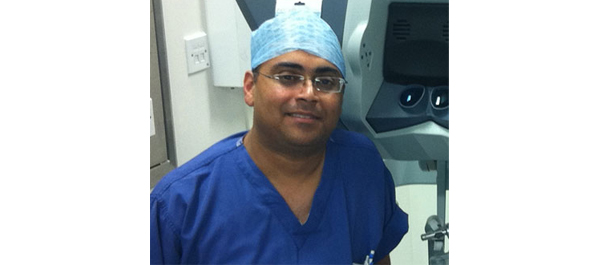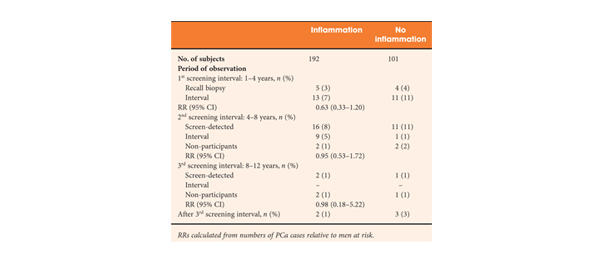
Editorial: Three robotic surgery training methods: is there a clear winner?
All training adds value. A craft-based specialty such as surgery has always recognised this. The advent of advanced minimally invasive surgical technology and techniques has provided both new challenges and new opportunities for surgical performance and for the delivery of training. Conceptually, we have moved from the Halstedian model of ‘See one, do one, teach one’ [1] to an environment where skills are acquired away from the operating room in simulator, inanimate and in vivo (animal) laboratory…

Dusting vs. Fragmentation and other highlights from WCE 2013
3 Comments
/
I am in the beautiful city of New Orleans for this year’s World Congress of Endourology (#WCE2013). The city indeed has a charm and vibe that is different to any other in the U.S. You feel it in the air the moment you touch down. Of course, of late it gained much infamy as the epicenter of Hurricane Katrina. The taxi driver who took me to the Sheraton Hotel where the conference is being held, tells me everything is now fixed – new roads, stronger levees. Even the Superdome looks magnificent in…

Mind Your Language Please!
Recently I came across a clinic letter that had the patient’s problem typed as “Balanitis EROTICA obliterans”. Reading the typo error and sharing it with the nursing staff instantly converted a serious clinic into one where everyone started to recall their funny typo encounters. Having come across similar typos in the past, I thought about sharing it with this blog. Examples such as abnormal lover (liver) function test, digital erectile (rectal) examination, examination of the penis revealed…

TUF Cycling Challenge in Southern Africa
(in memory of John Anderson MS FRCS)
As most of you know, sadly John Anderson, President Elect of the British Association of Urological Surgeons, died this summer from advanced prostate cancer, which had spread to his liver (you can read John’s obituary in the BJUI and watch a video of his 2012 address to BAUS).
In his memory during the first week of November a team consisting of 30 urologists and patients are travelling to the tip of Africa for a cycling Challenge to raise funds for The Urology…

Movember: The power of the Mo!
The word Mo is Australasian slang for a moustache and whilst not a northern hemisphere phrase this hasn't prevented rapid dissemination across the globe. Although originally an innovation solely in Australia and New Zealand for its first 6-7 years, Movember is now taking the world by storm with the UK and Canada leading the way. Staggeringly last year in the UK more than 363,000 men grew a hairy upper lip and in doing so raised over £27 million.
The Movember foundation donates the proceeds…

Movember and the Importance of Patient Advocacy
In October 2009 the resident on my service was Dr Dean Elterman. I have had many residents and fellows over the years and have always felt that as much as they hopefully learn something from me I probably learn more from my time with them. The concept of ‘drilling down’ to make lasting connections with leaders of the next generation is not something that is always intuitively grasped in the hierarchy of surgical life. As it was, in late October of that year Dean mentioned Movember to me and…

What can a Society do to make you a better surgeon?
World Congress of Endourology 2013 — The Society of Urological Robotic Surgeons meeting report.
Continuing this theme, Dr. James Borin (Baltimore, USA) reviewed the Fundamentals of Robotic Surgery curriculum in development from a collaborative effort. This would be a device independent curriculum that covers didactics, psychomotor skills, and team building. This is a huge effort with two grant mechanisms moving it along. It has been interesting to see this develop over the past decade,…

Editorial: Does inflammation reduce the risk of prostate cancer?
Chronic inflammation is thought to play an aetiological role in tumorigenesis in several cancers including bladder, oesophagus and liver [1]. Molecular studies show that it plays a critical role in several stages of the carcinogenic process including tumour initiation, promotion, metastases and response to therapy. However the role in prostate cancer is less clear and to date, clinical studies are inconclusive.
The article in this issue of BJUI by Yli-Hemminki et al. [2] appears to show…

Editorial: Is FDG-PET/CT ready for prime time?
Fluorodeoxyglucose positron-emission tomography (FDG PET)/computed tomography (CT) in bladder cancer
In this month's issue Mertens et al. [1] present a retrospective analysis of the clinical impact of fluorodeoxyglucose positron-emission tomography (FDG PET)/CT in 96 patients with muscle-invasive bladder cancer. Muscle invasion is present in ≈30% of patients presenting with bladder cancer and is associated with a higher incidence of nodal and metastatic disease than non-muscle-invasive tumours [2].…

The Surgical Spectacle: Blurred Lines
October’s #urojc discussion marks a number of important milestones– not only the 1st anniversary of the online, international Twitter-based Journal Club, but this month we reached 1000 followers on Twitter – an achievement indeed! We also saw a record number of participants in demonstration of the #urojc concept going from strength to strength.
Fittingly, this month’s paper “The Surgical Spectacle: A Survey of Urologists Viewing Live Case Demonstrations” by Elsamra et al, with free…
